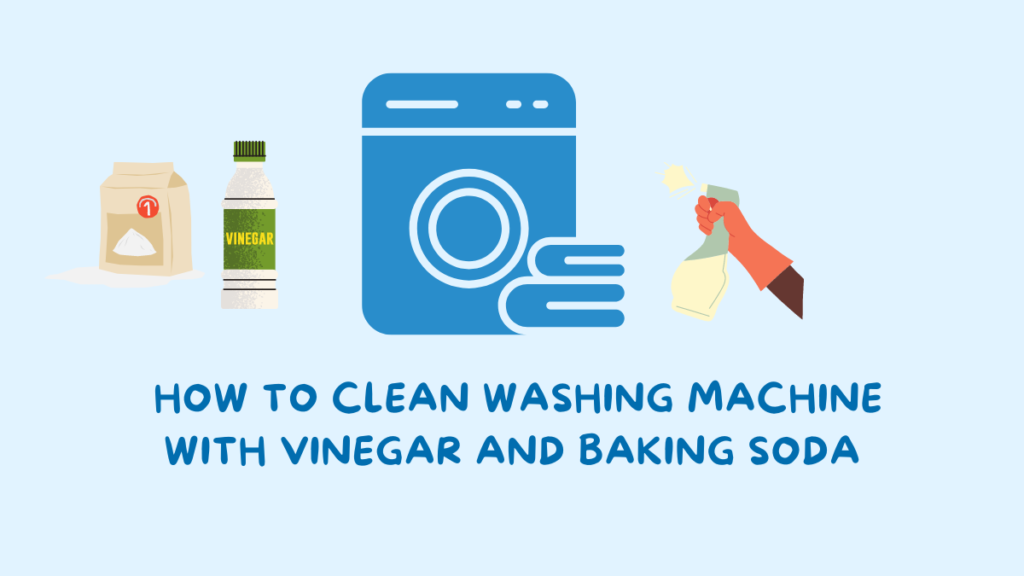
Cleaning your washing machine with vinegar and baking soda is simple and effective. Learn how to prevent bad odors, improve efficiency, and extend your machine’s lifespan with this detailed guide. Follow our step-by-step instructions to keep your washing machine fresh and clean. Discover the benefits of natural cleaning solutions and maintain your appliance effortlessly.
Introduction
Keeping your washing machine clean is crucial for maintaining its efficiency and ensuring your clothes are fresh and clean. Over time, washing machines can accumulate dirt, grime, and detergent residue, which can lead to bad odors and even mold growth. By regularly cleaning your washing machine with natural cleaners like vinegar and baking soda, you can keep it running smoothly and extend its lifespan.
Why Clean Your Washing Machine?
A clean washing machine works more efficiently, saving you time and energy. Regular cleaning helps prevent the buildup of mold, mildew, and soap scum, which can cause unpleasant odors and affect the cleanliness of your clothes. Additionally, a well-maintained washing machine is less likely to experience mechanical issues, helping it last longer and reducing the need for costly repairs.
How Often Should You Clean Your Washing Machine?
Ideally, you should clean your washing machine once a month to keep it in top condition. However, if you notice any bad smells, visible mold, or your clothes aren’t as clean as they should be, it’s a sign that your machine needs cleaning. Regular maintenance helps prevent these issues and keeps your machine running efficiently.
What You Will Need
To clean your washing machine, you will need a few simple supplies:
| Items | Description |
| White vinegar | Known for its natural disinfectant properties. |
| Baking Soda | Great for scrubbing away tough stains |
| A small brush | Ideal for gentle cleaning without scratching surfaces |
| A bowl or bucket | Perfect for reaching small or tight areas. |
| A soft cloth or sponge | Handy for mixing cleaning solutions |
Vinegar and baking soda are excellent choices because they are natural, effective, and safe for your machine. Vinegar acts as a disinfectant, removing bacteria and odors, while baking soda helps to scrub away residue and freshen the drum.
Preparing Your Washing Machine
Start by emptying your washing machine of any clothes or items. Check the drum and door seal for any visible debris, such as lint or hair, and remove it. This will make the cleaning process more effective and prevent any blockages during the cleaning cycles.
Cleaning the Drum with Vinegar
1. Pour two cups of white vinegar directly into the drum of your washing machine.
2. Run a hot water cycle without any clothes. This allows the vinegar to circulate throughout the machine, disinfecting and removing any buildup.
3. Vinegar helps to break down residue, kill bacteria, and neutralize odors, leaving your washing machine clean and fresh.
Cleaning the Drum with Baking Soda
1. After the vinegar cycle is complete, sprinkle half a cup of baking soda into the drum.
2. Run another hot water cycle. The baking soda will help to scrub away any remaining residue and freshen the drum.
3. Baking soda is a natural abrasive that can remove tough stains and buildup, ensuring your washing machine is thoroughly cleaned.
Cleaning the Detergent Drawer
Remove the detergent drawer from your washing machine and soak it in a solution of hot water and vinegar. Use a small brush to scrub away any soap scum and buildup. Rinse the drawer thoroughly under running water and let it dry completely before reinserting it into the machine. Cleaning the detergent drawer helps prevent clogs and ensures your detergent dispenses properly.
Cleaning the Door Seal
Inspect the door seal for any signs of mold or mildew. Use a cloth soaked in vinegar to wipe down the seal, paying special attention to any folds or crevices where mold can hide. If necessary, use a small brush to scrub away any stubborn areas. Make sure to dry the seal completely to prevent mold from returning. Keeping the door seal clean is essential for preventing odors and maintaining the integrity of the seal.
Cleaning the Filter
Locate the filter, usually found at the bottom front of the machine. Remove the filter and clean out any debris, such as lint or hair. Rinse the filter under running water to remove any remaining dirt. Replace the filter and make sure it is securely in place. Cleaning the filter helps prevent clogs and ensures your washing machine drains properly.
Final Rinse Cycle
To finish the cleaning process, run a final hot water cycle with one cup of vinegar. This will ensure any remaining residue is removed and your washing machine smells fresh. The final rinse cycle helps to flush out any lingering dirt and deodorize the machine.
Cleaning the Exterior
Don’t forget to clean the outside of your washing machine. Use a cloth soaked in vinegar to wipe down the exterior, removing any dust and grime. Pay attention to the control panel, knobs, and door. Polishing the exterior not only keeps your machine looking new but also prevents dirt from getting inside.
Tips for Keeping Your Washing Machine Clean
1. Leave the door open after each wash to allow the machine to dry out. This helps prevent mold and mildew growth.
2. Use the right amount of detergent. Too much detergent can cause buildup and bad odors.
3. Clean the detergent drawer and filter regularly to prevent clogs and ensure your machine runs efficiently.
4. Wipe down the door seal after each wash to remove any moisture and prevent mold.
5. Run a hot water cycle with vinegar once a month to keep your machine fresh and clean.
Common Mistakes to Avoid
1. Don’t use too much detergent. Excess detergent can cause buildup and lead to bad odors and poor washing performance.
2. Always check and clean the lint filter to prevent clogs and ensure proper drainage.
3. Avoid using harsh chemicals that can damage your machine. Stick to natural cleaners like vinegar and baking soda.
4. Don’t ignore signs of mold or mildew. Address these issues promptly to prevent further growth and maintain a clean machine.
5. Ensure the machine is level. An unlevel machine can cause excessive vibrations and wear on the components.
Conclusion
Cleaning your washing machine with vinegar and baking soda is an easy and effective way to maintain its efficiency and keep your clothes fresh. Regular maintenance will keep your machine running smoothly and extend its lifespan. By following these simple steps, you can ensure your washing machine remains clean and odor-free. Happy cleaning!
FAQs: Washing Machine Cleaning
1. How often should I clean my washing machine?
Clean your washing machine once a month for optimal performance and to prevent buildup.
2. Can I use bleach instead of vinegar?
Yes, but vinegar is a safer, eco-friendly option that effectively removes odors and disinfects your machine.
3. What if my machine still smells after cleaning?
Repeat the cleaning process or check for hidden mold or mildew in the door seal and detergent drawer.
4. Is it safe to clean a front-loading machine with vinegar and baking soda?
Yes, it’s safe and effective for both front-loading and top-loading machines.
5. Can I clean my machine with just baking soda?
Baking soda alone can help, but combining it with vinegar provides a more thorough clean and helps remove stubborn residue.
Read More
https://cleaningview.ca/eco-friendly-ways-to-freshen-up-your-home/
Important: The information provided here in the post is for general informational purposes only. It should not be taken as professional or any other type of advice. Always seek the advice of a qualified professional before implementing this information on your own. Thank you!
Add CleaningView To Your Google News Feed



